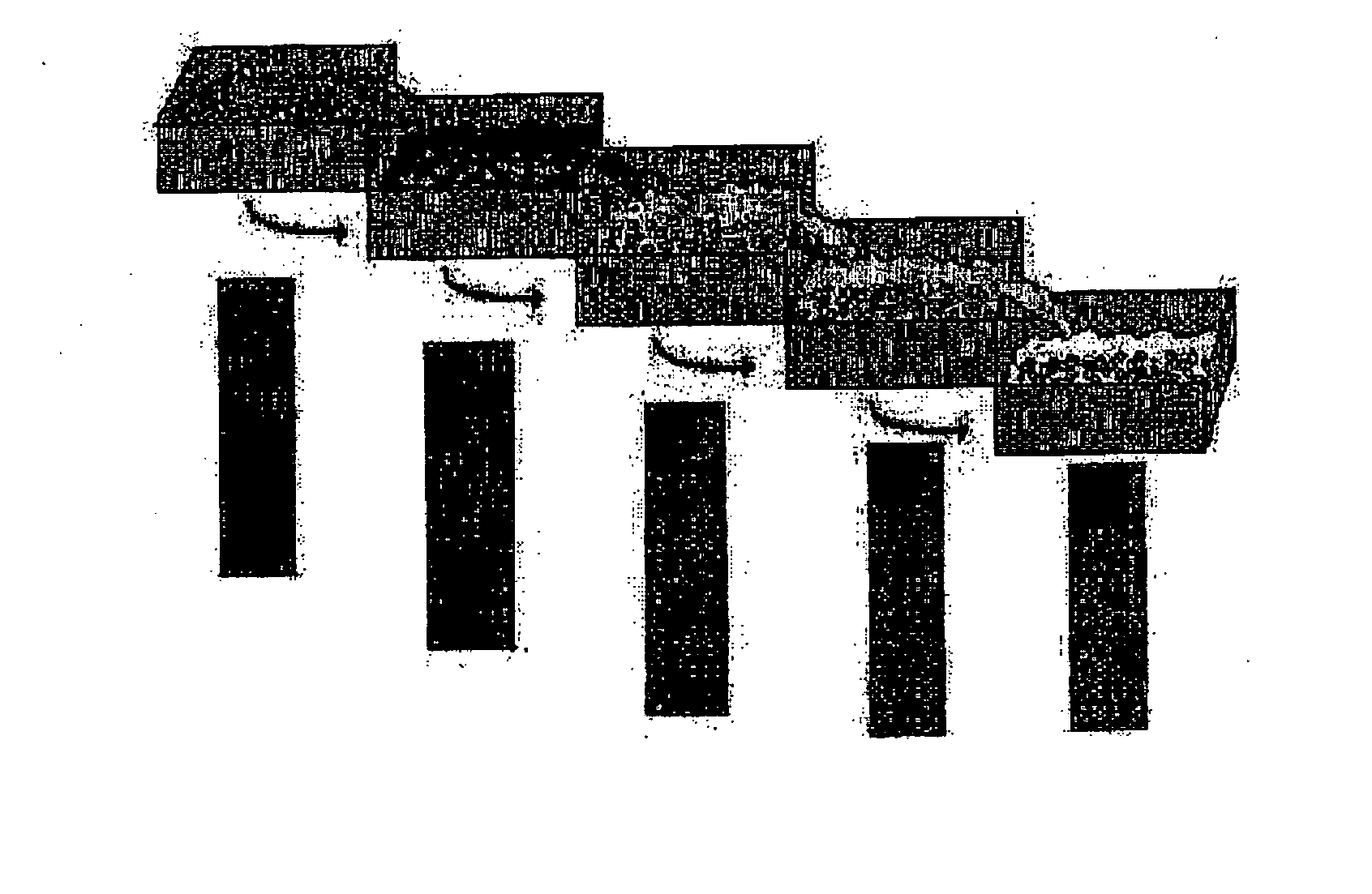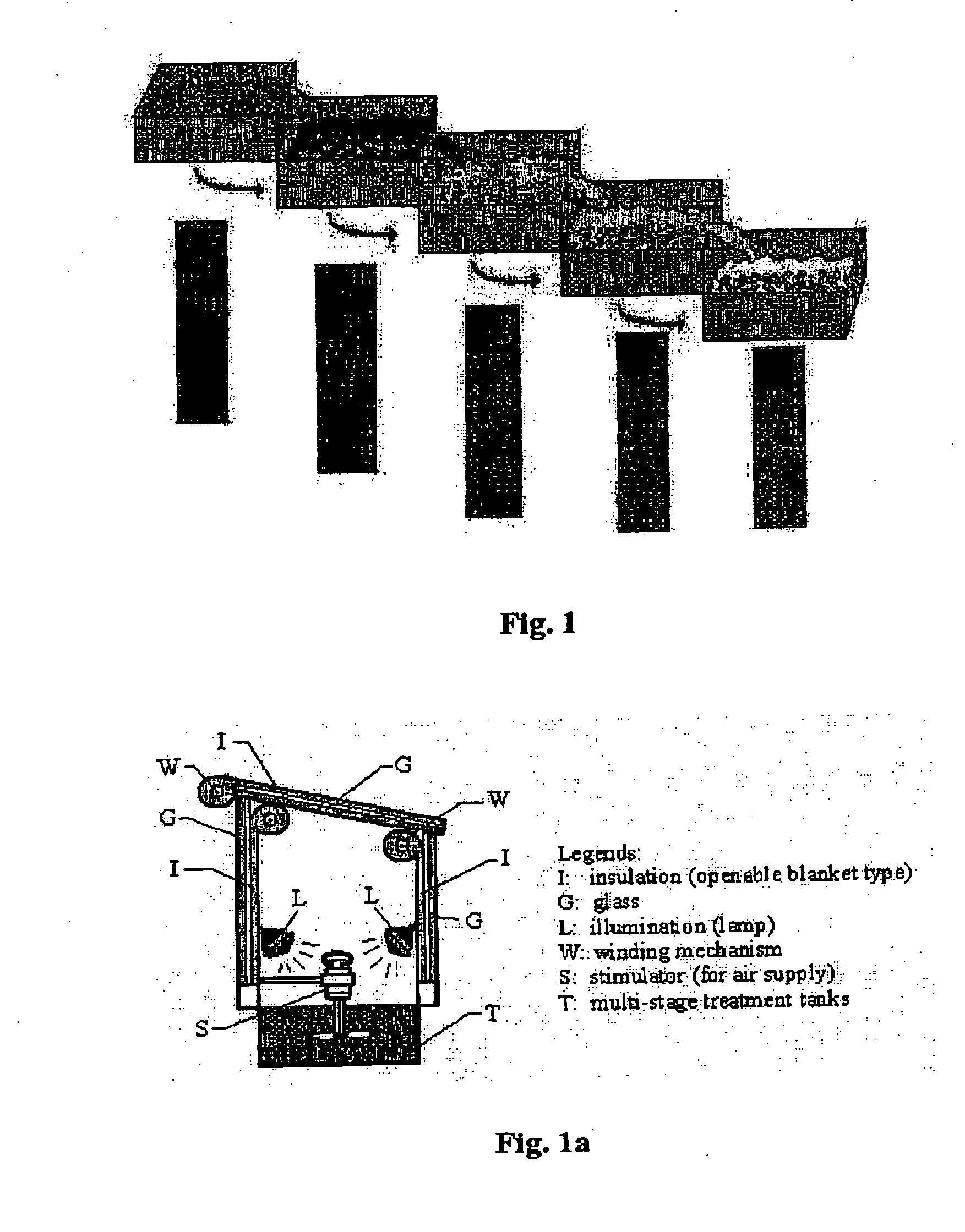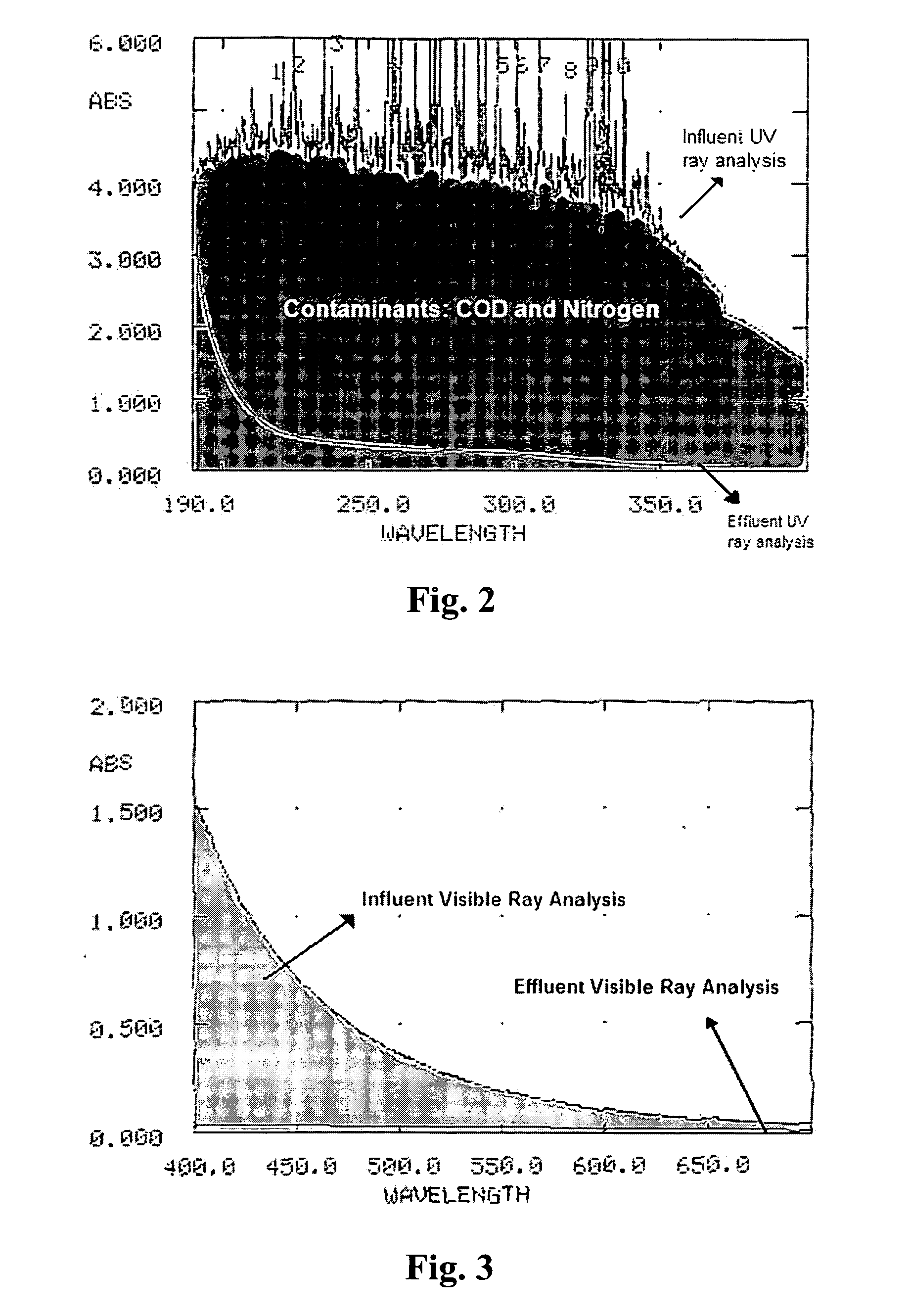Method of intensifield treatment for the wastewater contaning excrets with highly concentrated nitrogen and cod
a technology of wastewater contaning excrets and intensifield treatment, which is applied in biological water/sewage treatment, multi-stage water/sewage treatment, chemical apparatus and processes, etc. it can solve the problems of toxic wastewater discharged from industrial plants or farmland without sufficient treatment, polluting our reservoirs, and worrying about drinking water and breathing air. , to achieve the effect of efficient cultivation of alga
- Summary
- Abstract
- Description
- Claims
- Application Information
AI Technical Summary
Benefits of technology
Problems solved by technology
Method used
Image
Examples
implementing example 1
[0073] An animal farm employs a facility to treat the animal excreta of 5,000 swine. The collected animal excreta of 30 tons per day are pre-treated to separate the solid portion and liquid portion by adding precipitants. The liquid portion is pre-treated 24 hours to be COD 542 ppm, TN 96 ppm by the active sludge treatment. Then 50 ppm of Ca++ (calcium) salt is added to the pre-treated wastewater. Then, the pre-treated wastewater is sequentially flowed through the multi-filtering tanks, in which are cultivated the algae and which are filled with a mixture of soil, oyster powder and phosphate rock. The filtering tank has a 30 ton capacity and consists of 5˜10 stages. The UV scanning analysis of the fully treated effluent water is shown in FIGS. 2 and 4.
[0074] As seen in FIG. 2, the comparison of the before and after treatments for the swine wastewater, it is shown that many kinds of organic substances are evident before the treatment. However, most of the organic substances are none...
implementing example 2
[0081] For treating the urban sewage water, the solid substance in the wastewater is settled out in the precipitation tanks. Then, calcium salt (Ca) is added to the primarily treated wastewater. Then, the primarily treated sewage water is sequentially flowed through the multi-filtering tanks (same as in example 1). A small amount of air is supplied for diluting the carbon dioxide. For stimulating the photosynthesis of the algae and diatoms, artificial illumination is installed under or above the water being treated.
implementing example 3
[0082] For treating the runoff wastewater from a garbage dumpsite, calcium salt (Ca) is added into the runoff wastewater. Then, the primarily treated wastewater is sequentially flowed through the multi-filtering tanks (same as in example 1). A small amount of air is supplied for diluting the carbon dioxide. For stimulating the photosynthesis of the algae and diatoms, artificial illumination is installed under or above the water being treated.
PUM
 Login to View More
Login to View More Abstract
Description
Claims
Application Information
 Login to View More
Login to View More - R&D Engineer
- R&D Manager
- IP Professional
- Industry Leading Data Capabilities
- Powerful AI technology
- Patent DNA Extraction
Browse by: Latest US Patents, China's latest patents, Technical Efficacy Thesaurus, Application Domain, Technology Topic, Popular Technical Reports.
© 2024 PatSnap. All rights reserved.Legal|Privacy policy|Modern Slavery Act Transparency Statement|Sitemap|About US| Contact US: help@patsnap.com










